You are currently browsing the monthly archive for March 2013.
Once again I skipped the usual Friday post in favor of a Saturday post, but this time not because I forgot but rather to honor Good Friday. Not that Jojo Mayer’s playing isn’t honoring to our Lord and Savior in its own way…
Observations:
– Jojo is one of the few chopsy-drum-magazine-Guitar-Center-dvd-shelf that I really dig.
– This vid is obviously a clinic setting, and he’s demoing the use of Bonham triplets in a solo setting. The whole solo is played with just a “kick-right-left” pattern.
– Check out the rhythm change at 1:50… from triplet 8ths to 16ths… while still maintaining the Bonham triplet, but in a polyrhythm instead of a symmetrical quarter not grouping. He keeps the hats going on the quarter note too. Killer.
Double kick pedals are pretty amazing things. Nevertheless, here are 5 reasons why I don’t play double kick.
This week’s lesson in killing pocket is courtesy of the great Jim Keltner. This Jay Leno performance from 2006 features producer T Bone Burnett playing some of his own stuff. Upright bass, John Mayer on guitar, double drumset action… it doesn’t get much cooler than this.
Anybody know who that other drummer is? I feel like it might be a “she” but I can’t tell for sure… (Update: this 2nd drummer in question is Carla Azar)
HT: Bosmanssssss
I do “one-off” gigs with little or no rehearsal on a pretty regular basis. I’m a huge proponent of memorization wherever possible, but the fact remains that it’s not always possible, and the one-off gig with no rehearsal is usually my top contender for an unmemorizable situation.
That’s where charts come in. “Chart” is the musician slang term for sheet music, but where proper sheet music involves notes and rests on staff paper, charts are more broad and can include laymen elements like lead sheets or personal notes. That’s what my charts are: just a combination of a lead sheet and a form map with personal notes. I don’t use classical notation at all, ever. I make my charts as word documents composed entirely of typed characters. It’s something of a code that I’ve developed for myself. I keep all my charts on my laptop (I don’t even print them) and then I just bring the laptop to my gigs, which means they’re even backlit.
This is all fine and good, and today’s post is not meant to convince anyone that my personal charting method is BETTER than anyone else’s. I’m simply sharing it with you, but the thing I’m most interested in sharing is how I go about making the chart. The process revolves around repeated listens of the song I’m making a chart for, and over the years this has turned into a steady and consistent system for me.
I break the listens down into 3 passes, and the chart has 3 sections correspnding to these listens:
1. Vibe
2. Form
3. Parts
Clarification: I needed more than one listen per section early on in my chart-making, so the whole thing really revolves more around these sections than how many listens are required to get each section diagramed.
Vibe
My first listen through a song that I’m charting involves no note-taking at all. I focus on listening carefully to the song and I try to take it in for what it is. I call this “vibe” because in my mind this is where the DNA or “essence” of a song is found. Is the song upbeat or slow? Is it happy or sad? Is it a rocker or a ballad? More specifically, is it indie-rock, country, gospel, or something else? I spend the first listen asking myself these questions. I also pay attention to the lyric and let that inform my perception of the overall point of the song. Why did the songwriter create this song? What’s the main message, and what should I as a listener take away from the song?
These observations are critical to any instrumentalist who accompanies a song. At last year’s Drumset and the Kingdom conference, Matt Tobias made the brilliant point that when a musician plays along with a tune, he/she either DISables the song or ENables the song. There is no neutrality. Along these lines I’ve found that my first listen, in which I find the overarching purpose and intention in a tune, ends up being the most important step in my process. After identifying a song’s vibe I am prepared to the contribute to it in the best way possible.
I should also mention that I have my phrasing radar on during the first listen. This isn’t a vibe issue but instead has to do with measure numbers and whether or not they’re phrased in standard symmetry – groups of four or eight. 99.9% of all melodies and chord progressions are constructed within four or eight measure phrases, which makes the music feel “natural” and easy for listeners to follow along with. Unsymmetrical measure groups (5 or 7 or 3) make the music seem disjointed and unpredictable (which isn’t a bad thing, but it’s something a drummer needs to be aware of). If something like this jumps out at me during the first listen, I make a quick mental note and then I know to look for it during the 2nd listen.
Form
The second listen is when I start taking notes, and the notes begin with the road map of the song, also called the “form.” This is a measure count and song section map. A typical example of my song form note-taking looks like this…
INTRO (4)
VERSE (8)
PRE (4)
CHORUS (8)
TURN (4)
VERSE (8)
PRE (4)
DBL. CHORUS (16)
BRIDGE (9, 7+2)
PRE (4)
DBL CHORUS (8)
OUTRO (4)
“Pre” refers to a pre-chorus, and “turn” refers to a turn-around (which is like a pre-verse, the section that connects a chorus with the following verse)… and so on. These particular song sections aren’t found in every song, and some songs have additional sections not listed above. The point here is that I want to identify EVERY MEASURE in the song, and build it into my mind as being part of a larger section in the form. That way I have a solid understanding of the song’s trajectory, and I can easily see where to place fills and setups. This requires a very specific kind of listening which is very focused and constantly counting. It’s not a very “fun” way to listen to music, but wow is it helpful.
One more note about my form mapping: The measure numbers above, aside from the bridge, reflect the symmetrical 4-bar phrasing I mentioned earlier. In the case of an odd-numbered phrase, I always break down the measures according to how the phrasing is composed. Meaning, a group of nine bars is going to have division within it which probably follows the chord progression, and is probably also reinforced by the melodic contour. So the 9 bars are going to feel like 4+5, or 7+2, or any other possible breakdown.I pay attention to how the 9 bars feel and notate this in parentheses. This helps me to, at a glance, know where to place fills and resolution points in my playing.
Parts
My 3rd and final listen focuses on the actual drum parts – the specifics of what I’m doing on the instrument. Interestingly, this is probably the least important section of my notes… meaning, I could probably do a pretty good job of playing the song without any “parts” information at all. Having already listened to the song twice through while paying attention to the vibe and taking detailed notes on the form and measure numbers leaves me ready to take a crack at the tune and let my instincts determine the specific parts (in fact, this is what I do in sessions, where the song’s parts haven’t been determined yet anyway). But in the case of a live performance with a band that I’m subbing for I want to have ALL the details in place (not just the broad ones but the nuanced ones as well), so this is where the parts descriptions come in.
Here’s what my final chart often looks like, complete with parts…
INTRO (4) out
VERSE (8) in with kick only, 4 on floor
PRE (4) add tight hats and full backbeats on snare… hits on “2-3-4” in bar 4
CHORUS (8) slosh hats rock groove bars 1-6, sync #3 bars 7-8
TURN (4) slosh hats rock groove, cut on bar 4
VERSE (8) full 4 on floor groove with tight hats
PRE (4) continue 4 on floor groove… hits on “2-3-4” in bar 4
DBL. CHORUS (16) slosh hats rock groove, insert sync #3 in bars 7-8 and 15-16
BRIDGE (9, 7+2) out 1-4, kick only 4 on floor bars 5-7, build 8ths bars 8-9
DBL CHORUS (16) slosh hats rock groove, sync #3 in bars 7-8 and 15-16
OUTRO (4) slosh hats rock groove, dotted quarter hits in bar 4 to end
I always put the parts in italics so as to draw my eye during a quick glance. And you might notice that there could be a lot more detail in my descriptions of my parts, but that’s where the personal language I’ve developed over time comes in. The words above have more detail to my eye than they might to someone else. Additionally, my entire charting system revolves around multiple listens to the song ahead of time, and many of the details get filled in by my memory.
The memory element I just mentioned is the final and most important reason that I’ve designed my charting system in this way. The listens and the various stages of detail really push my mind toward memorization without me even trying to memorize. After making a chart like this I often times end up only glancing at it here and there during the performance, instead of burying my face in it for the entire tune.
SUMMARY: Ultimately, memorization is always my goal. When memorizing isn’t possible I meet it halfway with a chart system engineered to encourage memorization. The important thing is that I need to have a clear vision of how the song will go and what I will do. Hopefully my charting system can be helpful in some way toward developing your own gig preparation! If not then no big deal, but don’t tell me because I will take it personally and feel bad.
Last week’s video wasn’t *technically* a drum SOLO, so this week has two to make up for it (1:30 in the first video and 6:00 in the third video).
“To best illustrate Elvin’s contribution to the drums, just play a pre-Elvin Jones recording, then play an Elvin record, then play a post-Elvin record.” – Ron Carter
1) James Blake – Self-titled … The UK singer-songwriter’s only full-length recording to date. The programming and overall groove approach on this album is so mind-blowing.
2) Boz Skaggs – Memphis … Most recent record by this blues legend, produced by Steve Jordan (who also plays drums). Tones are rich, warm, organic, and so beautiful.
3) St Vincent – Strange Mercy … I’m somewhat late to the party on St Vincent, a female vocalist/songwriter/guitarist with an incredibly artistic and creative sound.
4) Fourtet – There Is Love In You … British post-rock electronica. Great use of live drums within the samples and loops.
5) Keith Jarrett’s “Standards” – full concert on Youtube … the internet wins again for providing rad music and footage to go along with it. I have a DVD of this concert and it cost me a LOT back in the early 2000’s when I bought it, so don’t miss the chance to watch it for free online…
The tour I’m on right now stopped in Phoenix a couple days ago, and I was able to meet up with some close friends there for the day. The first thing we did was check out the the cleverly named “Musical Instrument Museum” on the north side of town.
Wow… it was super cool. Tons of square-footage absolutely packed with instruments from all continents and people groups and time periods. The articles on display were extensive and the facility was gorgeous. The interactive section had legit Indonesian gamelan and a real theremin, which were both really interesting to play. Anybody who happens to be in Phoenix should make time to stop by this place.
Cool stuff on the drum side of things…
I just read a great article from Mediapocalypse, complete with graphs, stats, and analysis of the graphs/stats. READ IT. DO IT NOW.
Observations:
– I’m totally fine with a future that has less professional musicians. That just means less competition, right? Especially with the author pointing out that “it doesn’t seem as if the music market is in a downward trend. In fact, more people are listening to more music than ever before.”
– “We clearly need shorter copyright terms.” Yes and yes.
– “Those with the entrepreneurial skills have more and more opportunities for exposure than those skilled only in composition, performance or recording.” You could probably substitute the phrase “less of an entitlement mentality” for “entrepreneurial skills” and the sentence would make the same point.
Along these lines, this article by Seth Godin on “working for free” is also a good read a makes a compelling argument.
HT: Billy Thommes
Today’s From The Archives post represents a definite turning point for me as a drummer. The amount of cymbals (and drums for that matter) to include in one’s setup is not arbitrary or a matter of mere preference.
There should be more strategy than that. Check it out.
Well, I missed the deadline for Drum Solo Friday again. The good news is that Vinnie Colaiuta doesn’t care…
Observations:
– I’m pretty comfortable listening to odd time signatures and over the bar phrasing and all that. He still loses me… A LOT.
– Style points for traditional grip.
– Index finger out technique on the right hand stick grip… which is very similar to how I’ve always done it. Guys have told me that this is “wrong.” I’m just going to show this video to the next guy who tells me that.

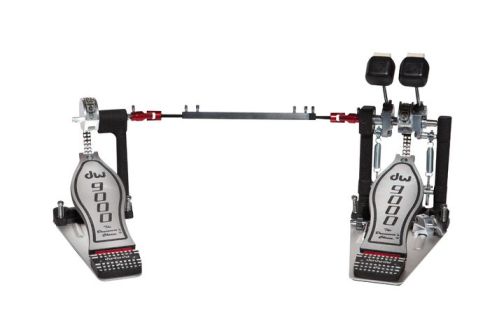
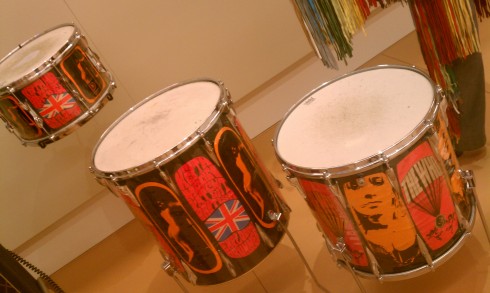
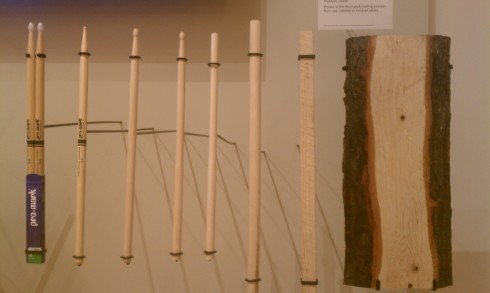
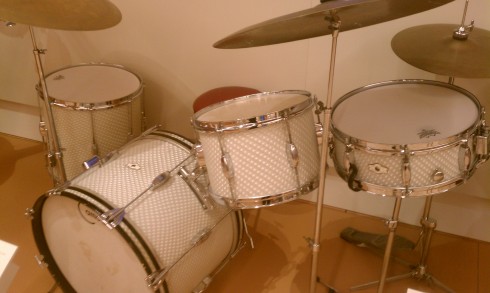
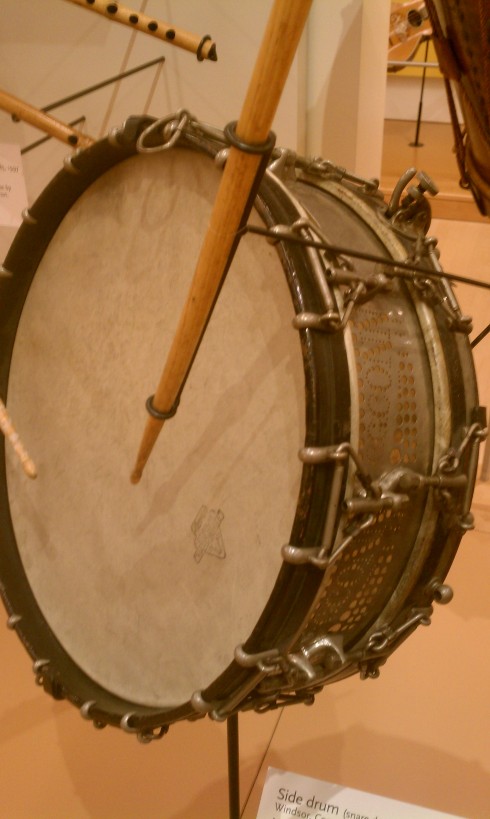
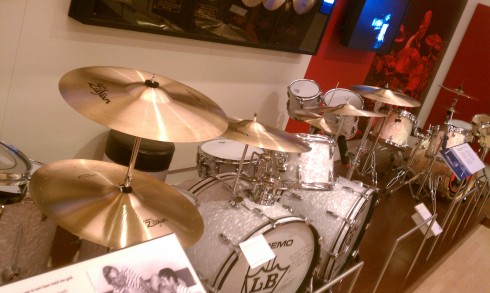
Recent Comments